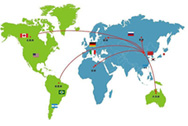- Expanded Polystyrene
- Flame Retardant EPS
- Fire Resistant EPS
- FMS EPS
- FSA EPS
- EPP Black
- EPP Gray
- EPP White
- Expanded Polypropylene AG17
- Expanded Polypropylene CH17
- Expanded Polypropylene CS17
- Expanded Polypropylene DB17
- Expanded Polypropylene GR17
- Expanded Polypropylene ML17
- Expanded Polypropylene NF17
- Expanded Polypropylene PB17
- Expanded Polypropylene PR15
- Expanded Polypropylene RD17
- Expanded Polypropylene TL17
- Expanded Polypropylene YL17
- Expanded Polypropylene ZS15
- 4,4'-Oxydianiline

Q&A of EPS
What is Expanded Polystyrene
Expanded polystyrene is a plastic foam material that has certain desirable properties because of its structure. It is extraordinarily light and buoyant, and a good insulator against heat and sound. It can be used as a building material or a design element, and can be molded into many shapes for a number of household uses as well.
In most cases, expanded polystyrene foam is white and is composed of small, interconnected beads. It is made by combining the chemicals ethylene and benzene, to make a compound known as styrene. The styrene is then treated with other chemicals which cause the styrene molecules to polymerize, or to group together in long chains. This reaction is only allowed to proceed to a certain point, and is then stopped. The resulting beads are allowed to cool and are then cleaned.
After formation and cleaning, the beads must be expanded, which happens in three main stages. First, the beads are heated with hot air or steam until their density is three percent of its original value. The beads are then cooled for 24 hours and molded. Once inside the mold, they are injected with low-pressure steam, which further expands the beads and fuses them together. When the mold is cooled, the expanded polystyrene is finished and ready for use or shipment.
Expanded polystyrene differs from a similar product, called extruded polystyrene, in important ways. Extruded polystyrene is made using chlorofluorocarbons (CFCs), which are considered by many to be harmful to the balance of ozone in the earth’s atmosphere. Expanded polystyrene is made without these compounds, making it more benign to the environment. Both products, however, can be recycled like all plastics.
Another important advantage of expanded polystyrene, especially for products like disposable cups, is that it is very cost-effective. Manufacturing polystyrene foam requires much less energy than the manufacture of paper-based alternatives. Additionally, it has the potential to create much less waste than paper. For example, when properly burned, one ton (907 kg) of polystyrene cups produces only 0.2 ounces (5.66 g) of ash, whereas the same amount of paper produces 200 pounds (90.7 kg) of ash.
It is also notable that polystyrene foam does not biodegrade. This is considered a disadvantage by some, but the fact that it is chemically inert makes it a stable fill material which helps provide for safe and sanitary landfill reclamation. Despite this fact, the prevailing trend has been to reduce and recycle polystyrene foam wherever possible.

